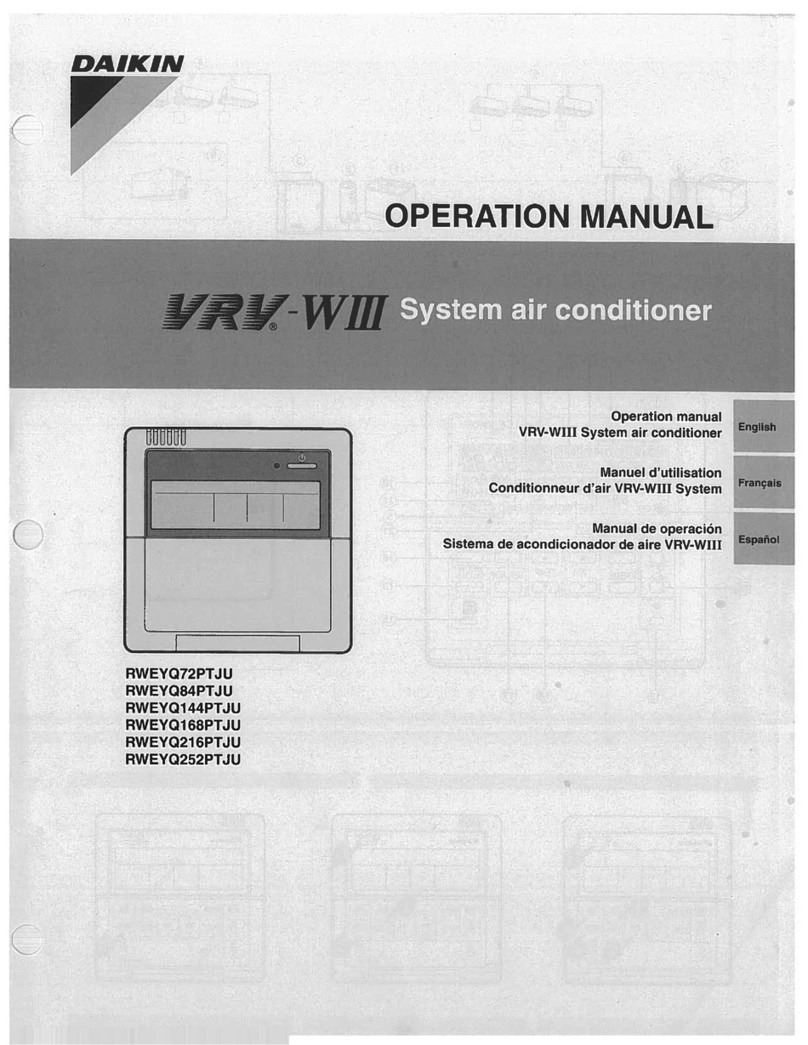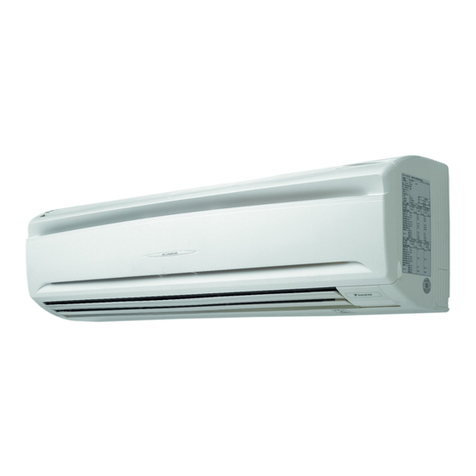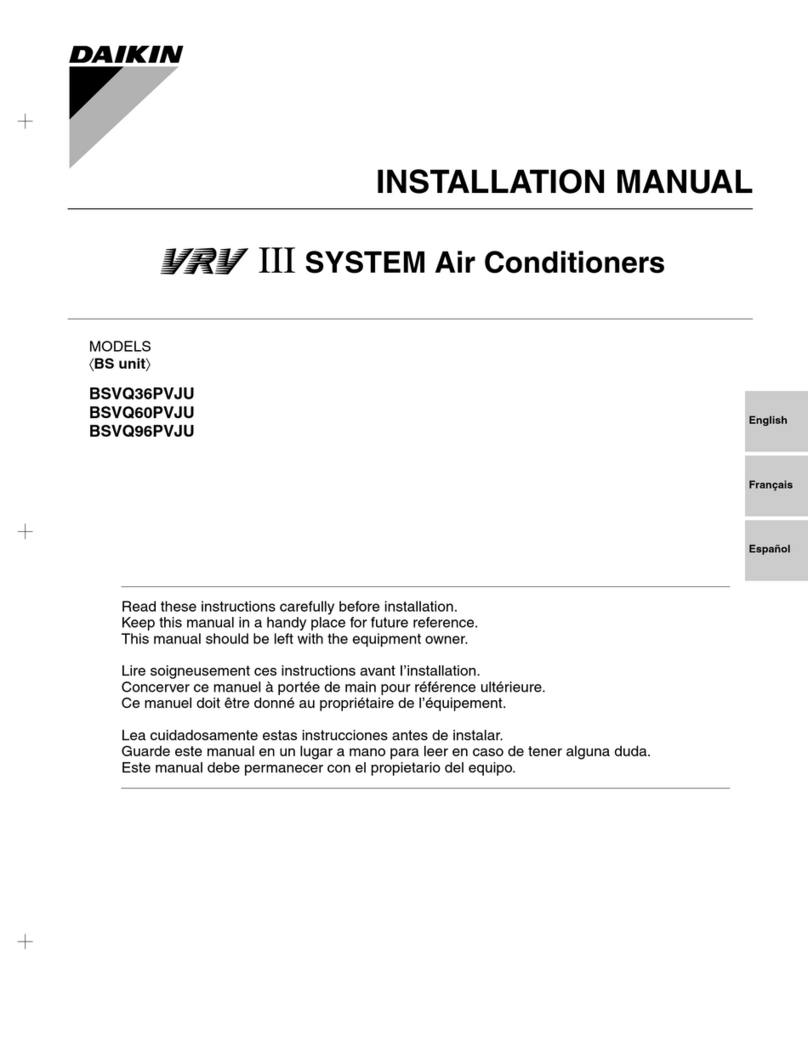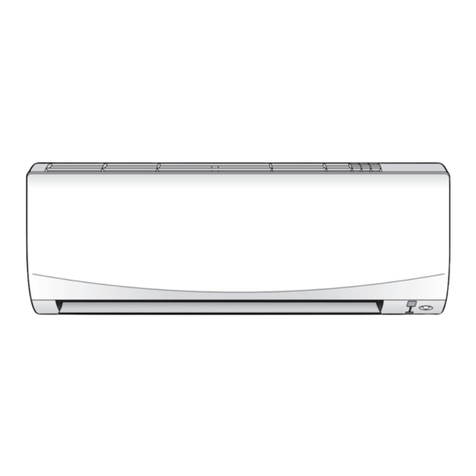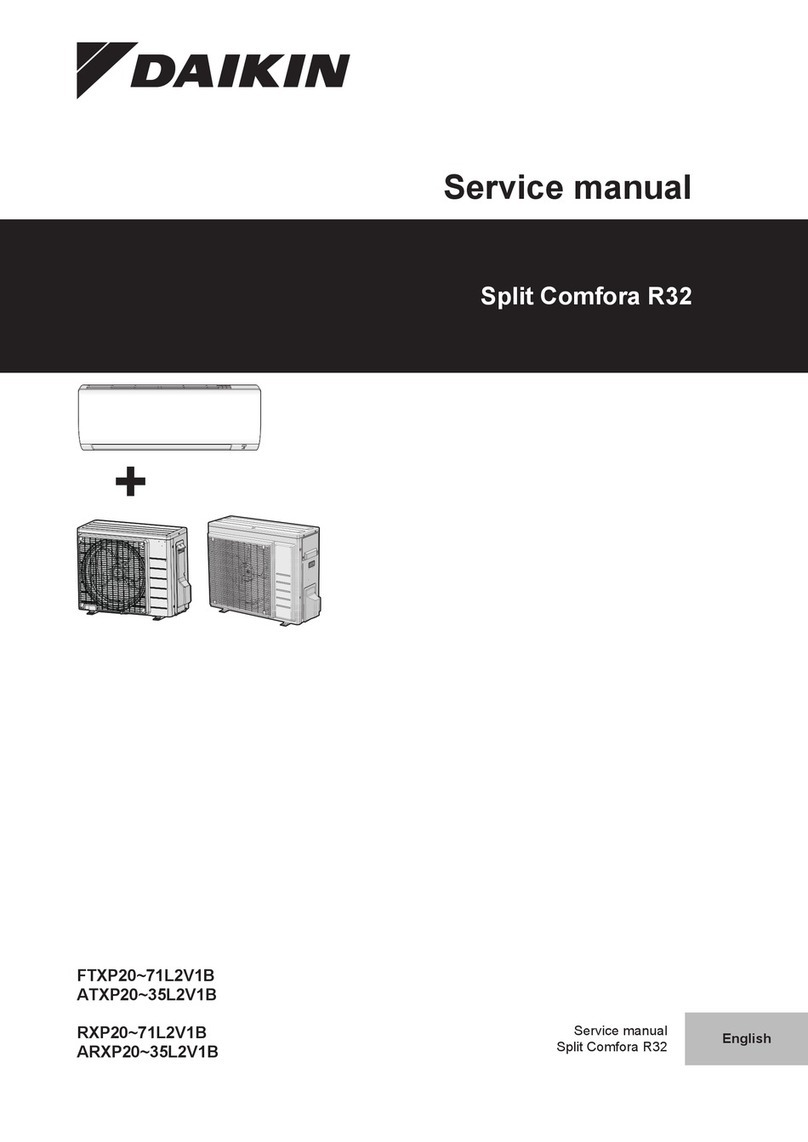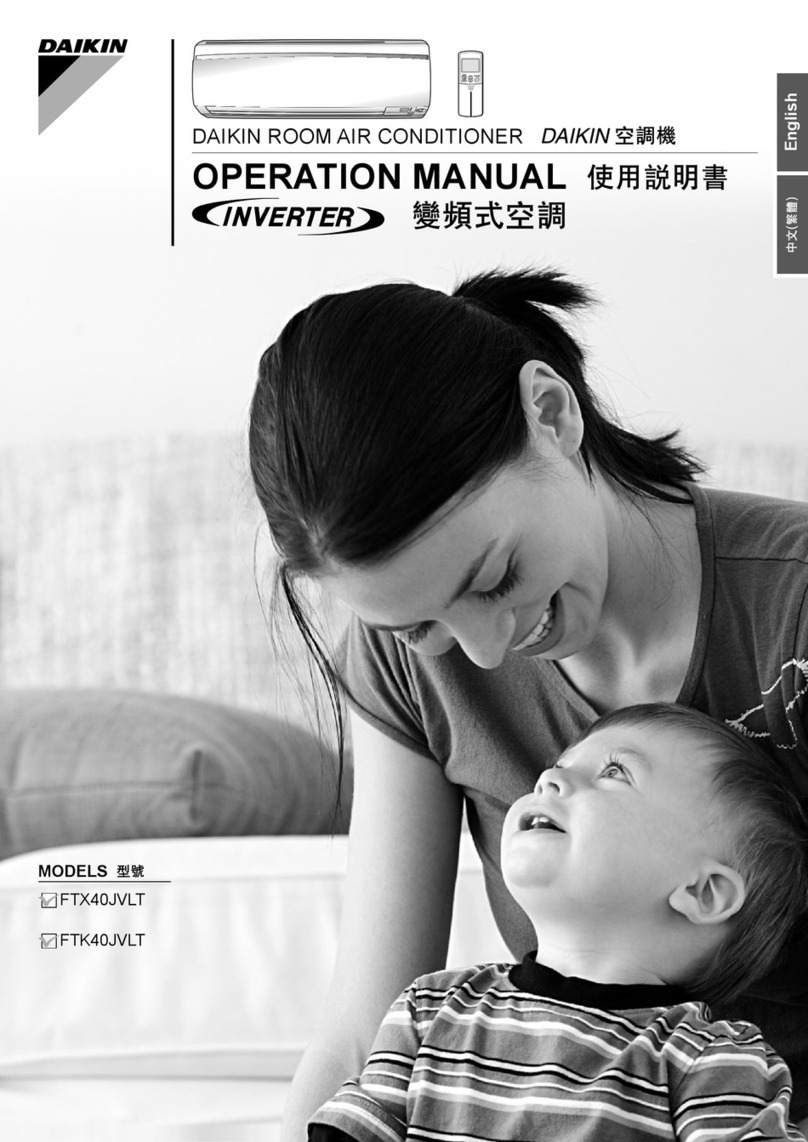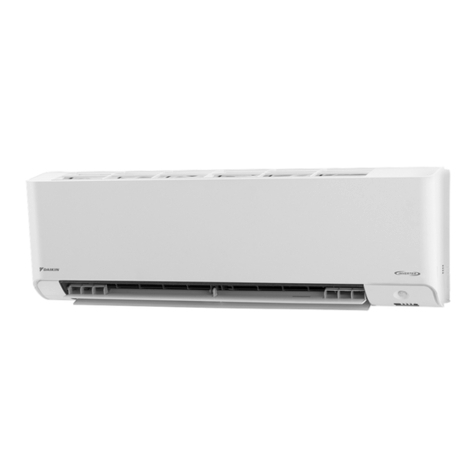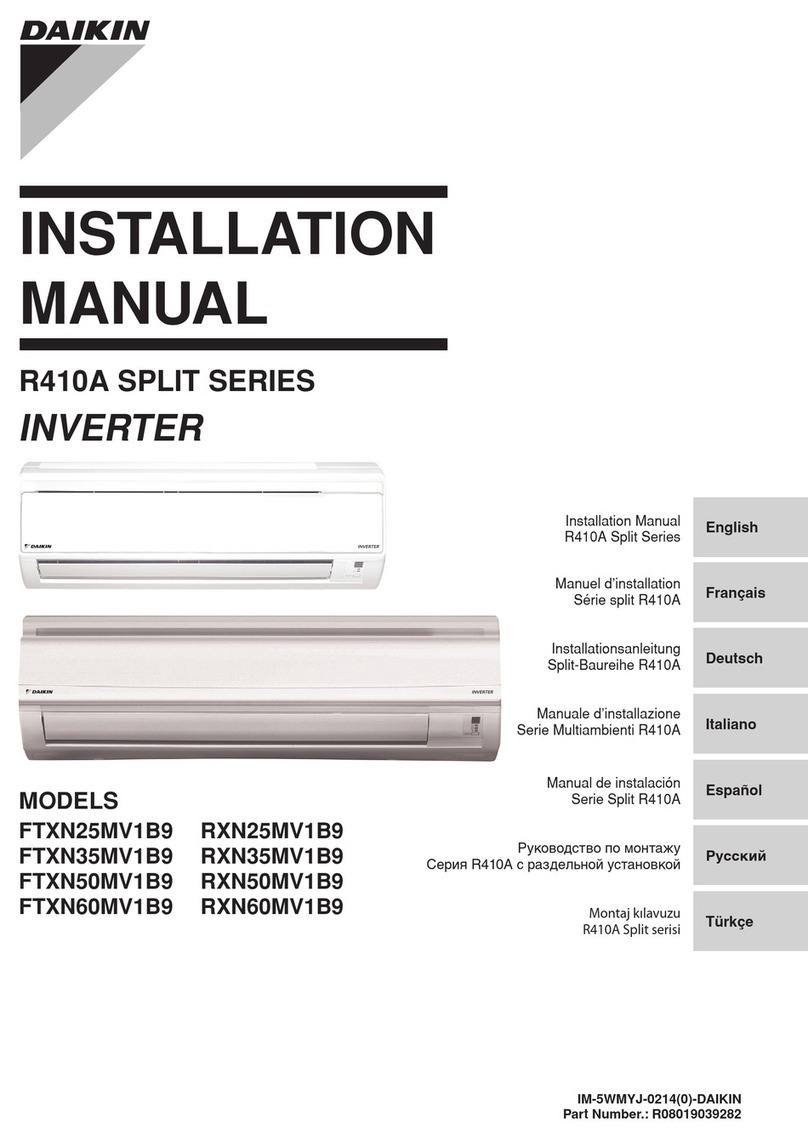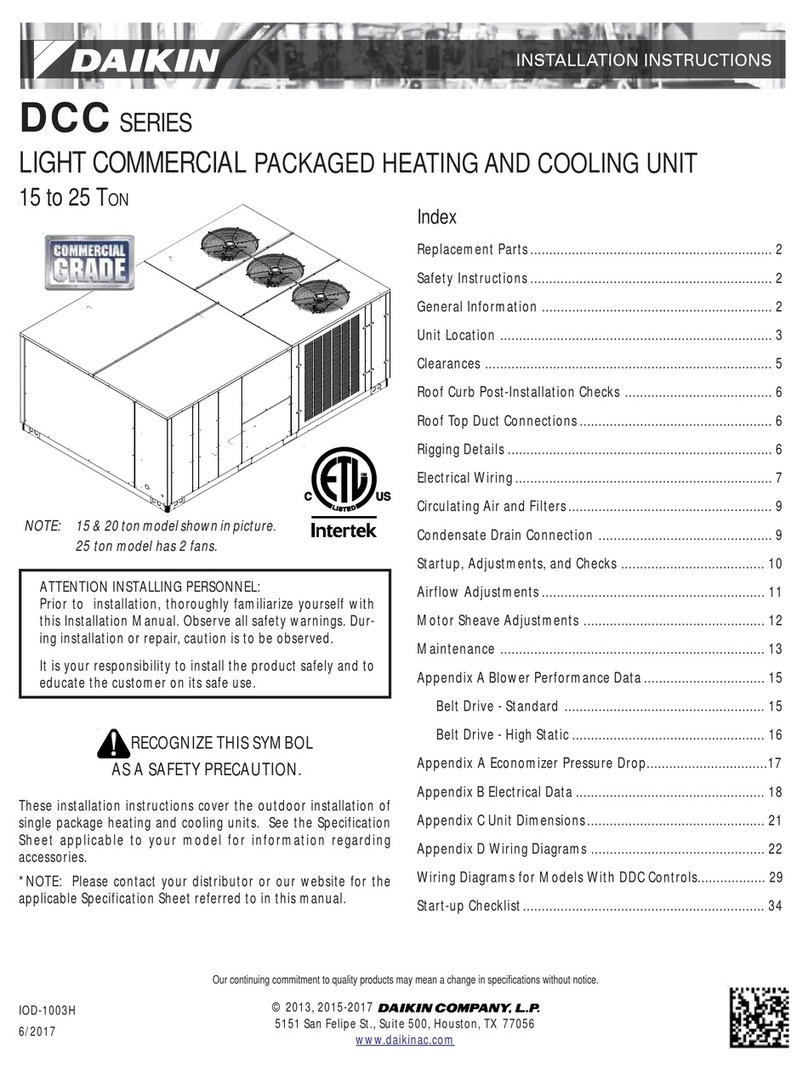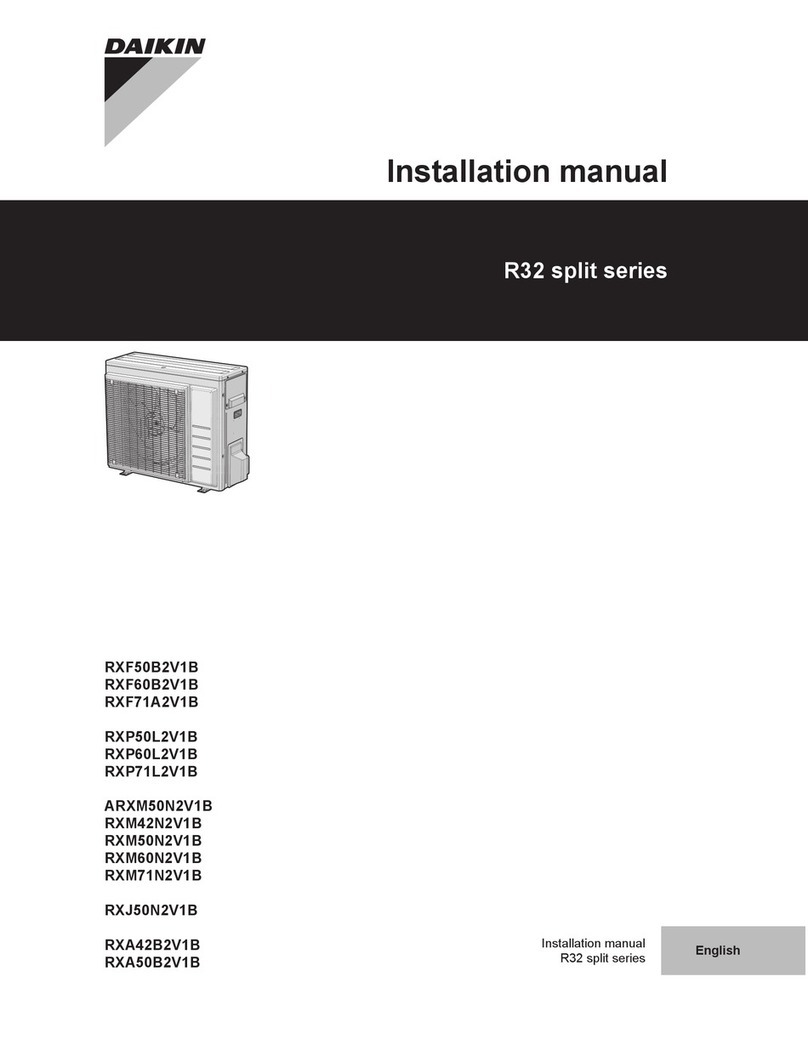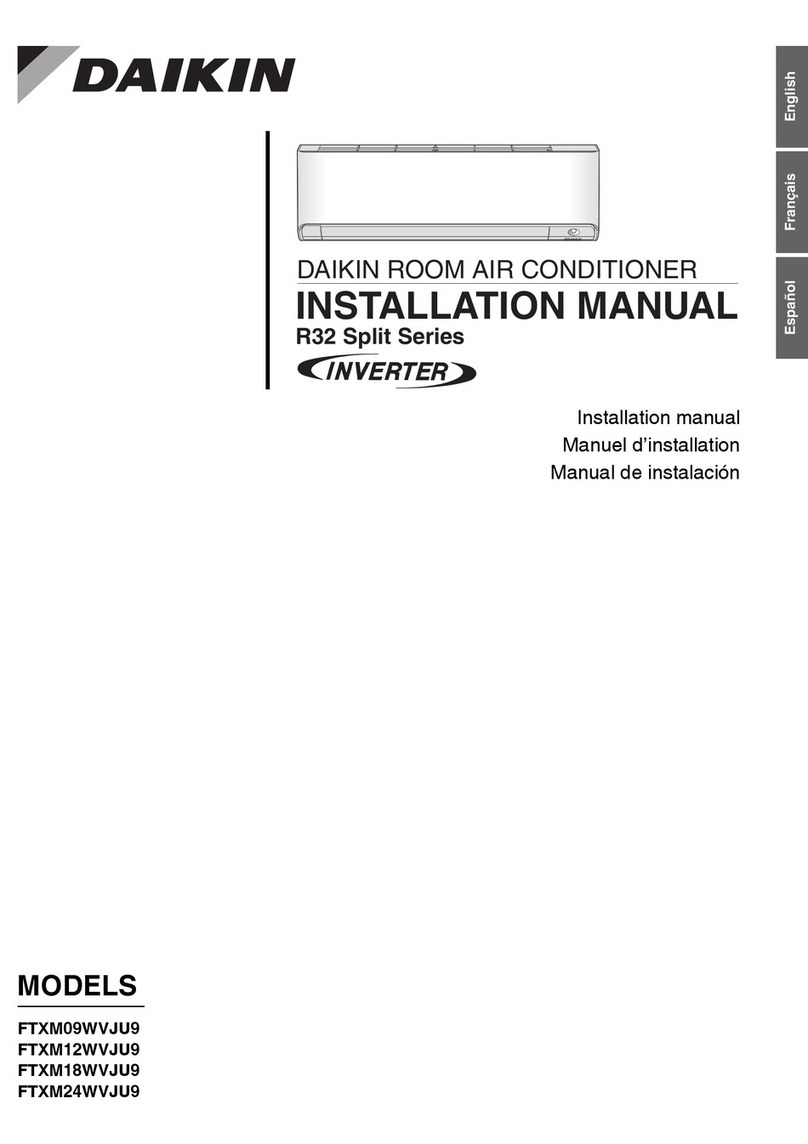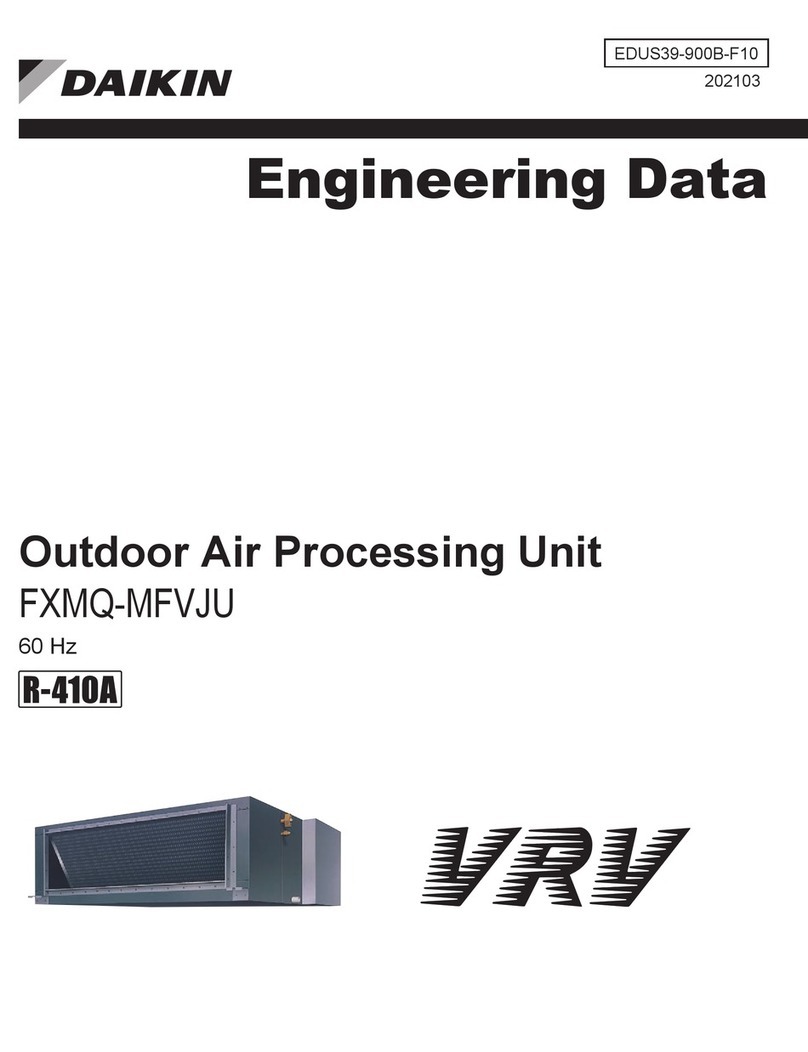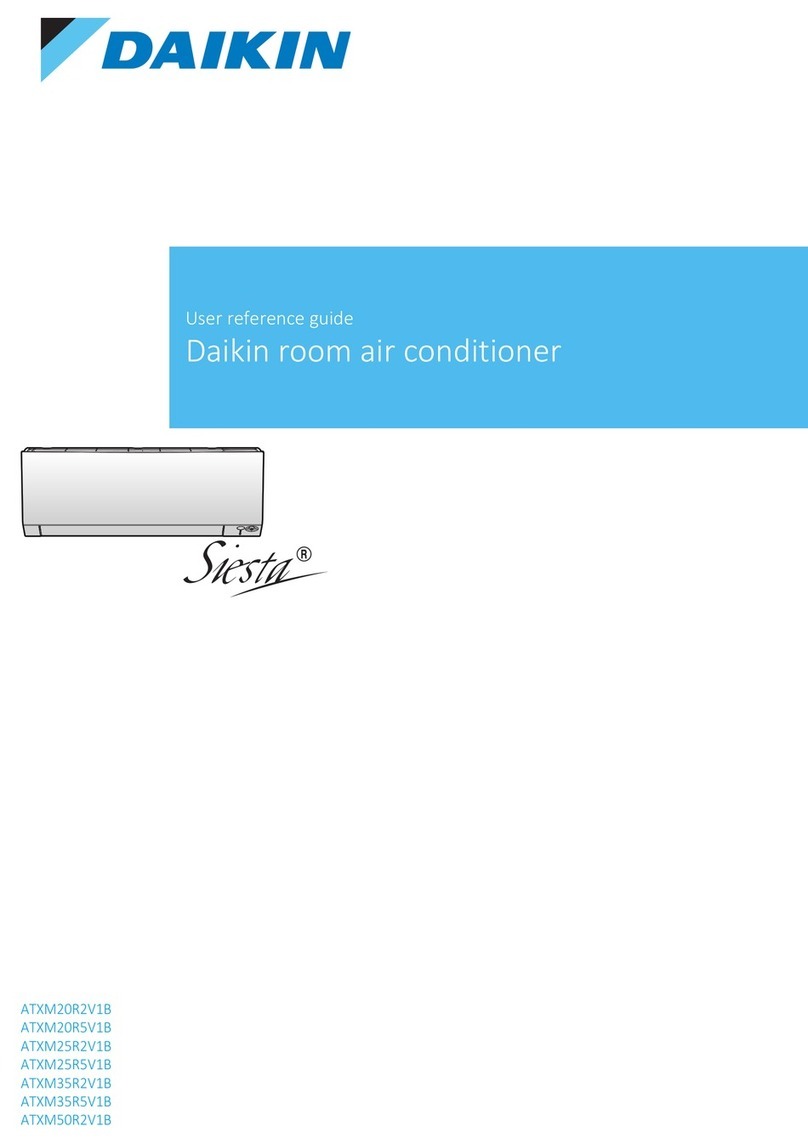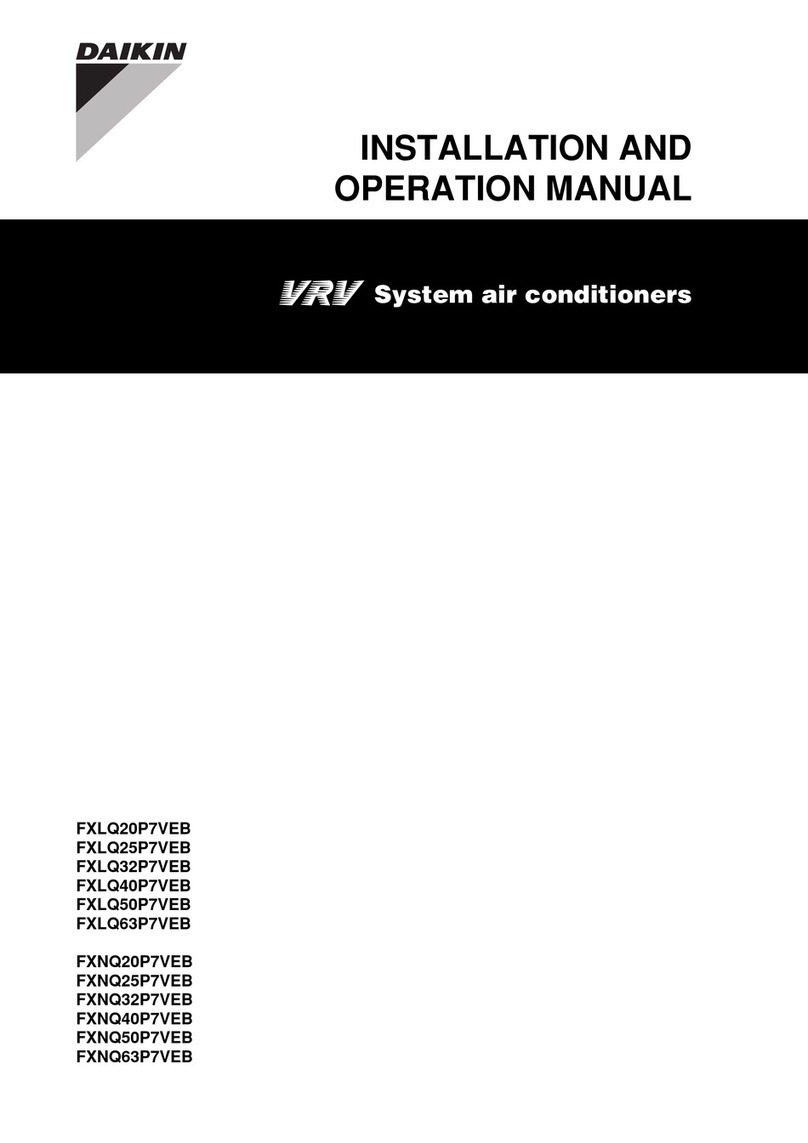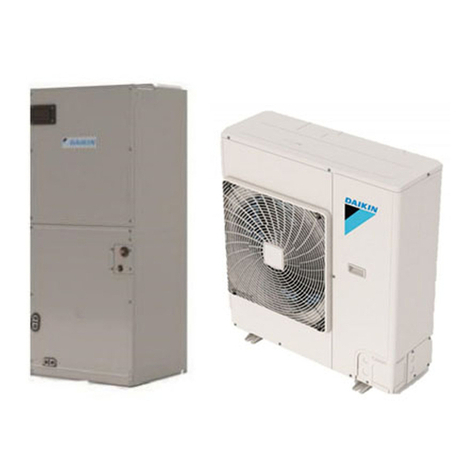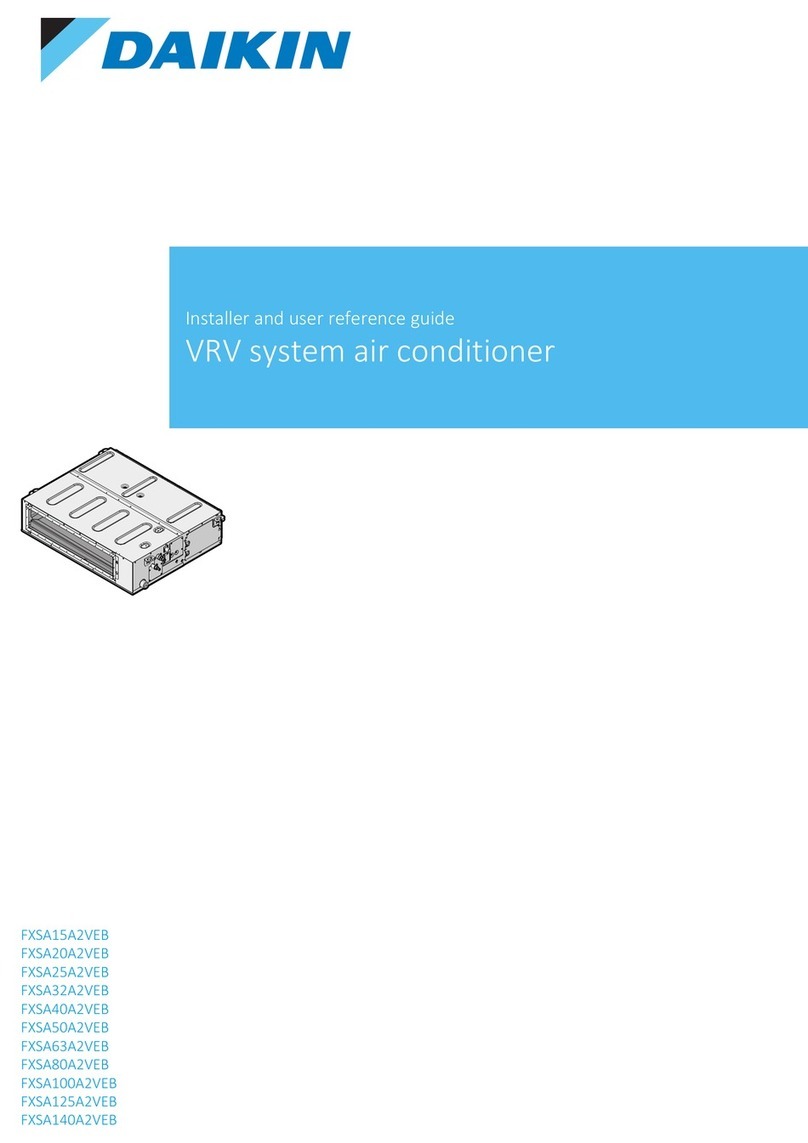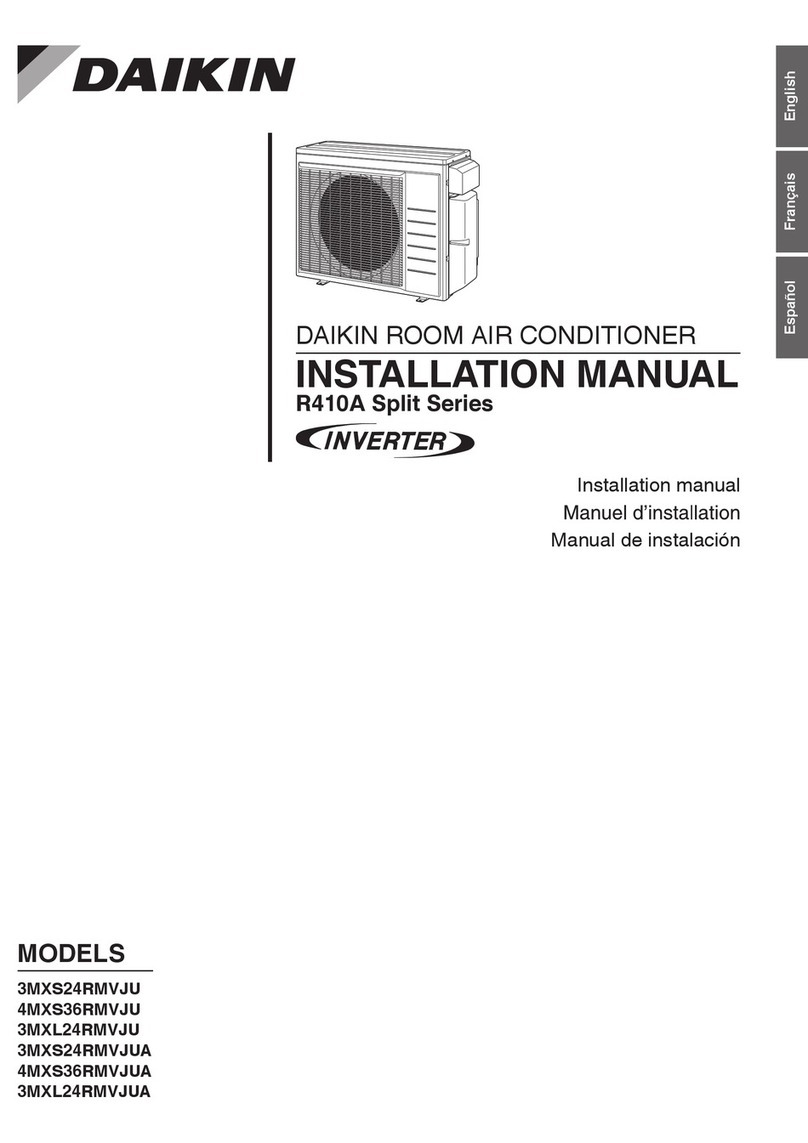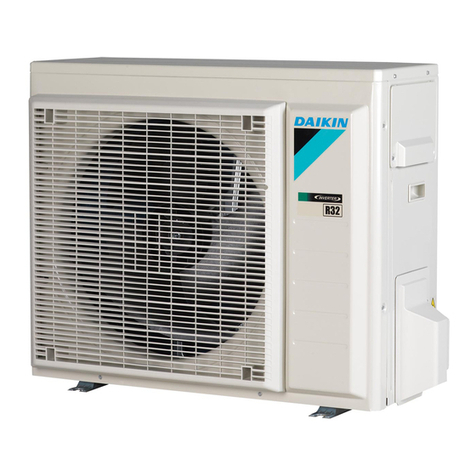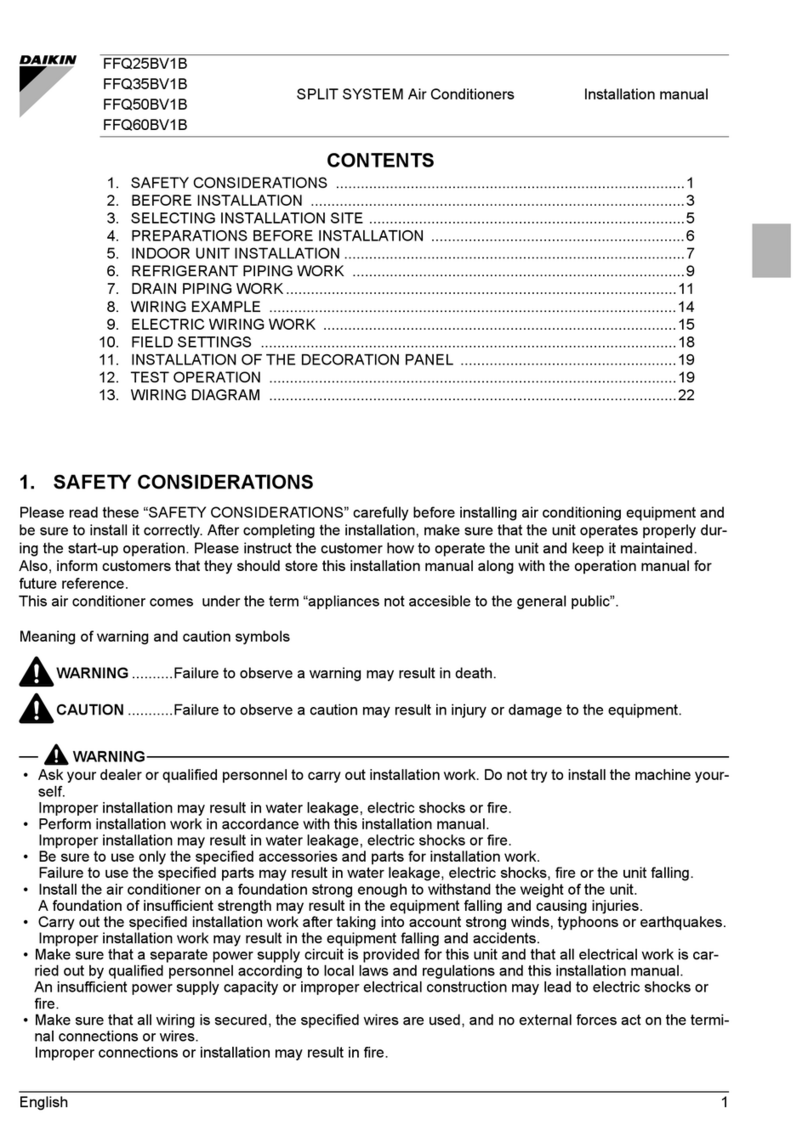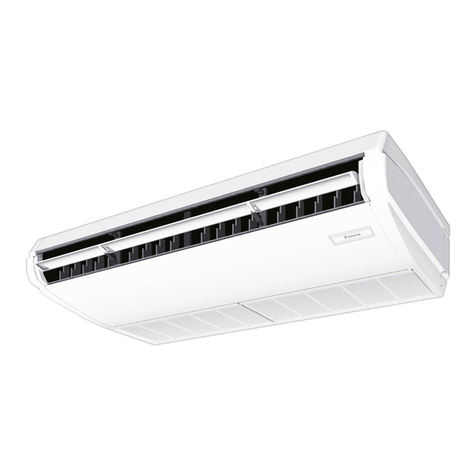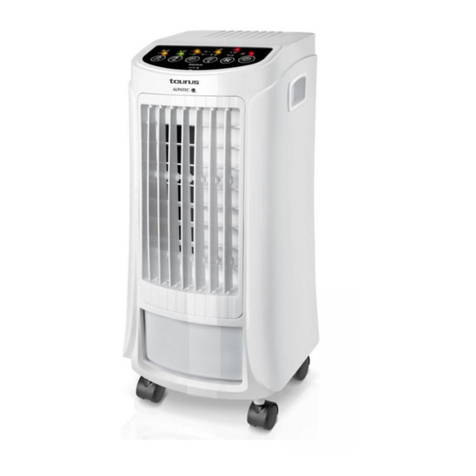
2■English
• Makesurethatallwiringissecured,thatspeciedwires
areused,andthatnoexternalforcesactontheterminal
connections or wires. Improper connections or installation
mayresultinre.
• When wiring, position the wires so that the service lid can
be securely fastened. Improper positioning of the service
lidmayresultinelectricshock,re,ortheterminals
overheating.
• Before touching electrical parts, turn off the unit.
•
The circuit must be protected with safety devices in
accordance with local and national codes, i.e. a circuit breaker.
•
Securely fasten the outdoor unit service lid. If the service lid
is not installed properly, dust or water may enter the outdoor
unitcausingreorelectricshock.
•
When installing or relocating the system, keep the refrigerant
circuitfreefromsubstancesotherthanthespecied
refrigerant (R410A) such as air. Any presence of air or
other foreign substance in the refrigerant circuit can cause
an abnormal pressure rise or rupture, which may result in
equipment damage and even injury.
• Do not change the setting of the protection devices. If the
pressure switch, thermal switch, or other protection device
is shorted and operated forcibly, or parts other than those
speciedbyDaikinareused,reorexplosionmayoccur.
• Do not use means to accelerate the defrosting process (if
possible) or to clean, other than those recommended by
the manufacturer.
•
The appliance must be stored in a room without continuously
operatingignitionsources(forexample:openames,an
operating gas appliance or an operating electric heater).
• Do not pierce or burn.
• Be aware that refrigerants may not contain an odor.
• Comply with national gas regulations.
CAUTION
• Donottouchtheswitchwithwetngers.Touchingaswitch
withwetngerscancauseelectricshock.
• Do not allow children to play on or around the unit to
prevent injury.
• Wear adequate personal protective equipment (protective
gloves, safety glasses,…) when installing, maintaining or
servicing the system.
• Theheatexchangernsaresharpenoughtocut.Toavoid
injury,wearglovesorcoverthenswhileworkingaround
them.
• Do not touch the refrigerant pipes during and immediately
after operation as the refrigerant pipes may be hot or
cold,dependingontheconditionoftherefrigerantowing
through the refrigerant piping, compressor, and other
refrigerant cycle parts.Your hands may suffer burns or
frostbite if you touch the refrigerant pipes. To avoid injury,
give the pipes time to return to normal temperature or, if
you must touch them, be sure to wear proper gloves.
•
Install drain piping to ensure proper drainage. Improper drain
piping may result in water leakage and property damage.
• Insulate piping to prevent condensation.
• Be careful when transporting the product.
• Do not turn off the power immediately after stopping
operation. Always wait for at least 5 minutes before turning
off the power. Otherwise, water leakage may occur.
• Do not use a charging cylinder. Using a charging cylinder
may cause the refrigerant to deteriorate.
•
Refrigerant R410A in the system must be kept clean, dry, and tight.
(a) Clean and Dry -- Foreign materials (including mineral
oils such as SUNISO oil or moisture) should be
prevented from getting into the system.
(b)
Tight -- R410A does not contain any chlorine, does not
destroy the ozone layer, and does not reduce the earth’s
protection again harmful ultraviolet radiation. R410A
can contribute to the greenhouse effect if it is released.
Therefore take proper measures to check for the tightness
of the refrigerant piping installation. Read the chapter
Refrigerant Piping and follow the procedures.
• Since R410A is a blend, the required additional refrigerant
must be charged in its liquid state. If the refrigerant is
charged in a state of gas, its composition can change and
the system will not work properly.
• The outdoor unit is for R410A. See the catalog for indoor
models that can be connected. Normal operation is not
possible when connected to non-compatible indoor units.
•
Remote controller (wireless kit) transmitting distance can be
shorterthanexpectedinroomswithelectronicuorescent
lamps (inverter or rapid start types). Install the indoor unit
farawayfromuorescentlampsasmuchaspossible.
• Indoor units are for indoor installation only. Outdoor units
can be installed either outdoors or indoors.
• Do not install the air conditioner or heat pump in the
following locations:
(a) Where a mineral oil mist or oil spray or vapor is
produced,forexample,inakitchen.
Plastic parts may deteriorate and fall off or result in
water leakage.
(b)
Where corrosive gas, such as sulfurous acid gas, is produced.
Corroding copper pipes or soldered parts may result in
refrigerant leakage.
(c) Near machinery emitting electromagnetic waves.
Electromagneticwavesmaydisturbtheoperationof
the control system and cause the unit to malfunction.
(d)
Whereammablegasmayleak,wherethereiscarbon
ber,orignitabledustsuspensionintheair,orwhere
volatileammablessuchasthinnerorgasolinearehandled.
Operatingtheunitinsuchconditionscancauseare.
• Take adequate measures to prevent the outdoor unit
from being used as a shelter by small animals. Small
animals making contact with electrical parts can cause
malfunctions,smoke,orre.Instructtheusertokeepthe
area around the unit clean.
• Servicing shall be performed only as recommended by the
manufacturerandlicensedorcertiedintheirjurisdiction.
NOTE
• The outdoor unit should be positioned where the unit and
power supply wires (breaker panel to outdoor unit) are at
least 10ft (3m) away from any televisions or radios. (The
unit may cause interference with the picture or sound.)
Depending on the radio waves, a distance of 10ft (3m)
maynotbesufcienttoeliminatethenoise.
• Dismantling the unit, treatment of the refrigerant, oil and
additional parts must be done in accordance with the
relevant local, state, and national regulations.
• Only use tools for R410A, such as a gauge manifold,
chargehose,gasleakdetector,reverseowcheckvalve,
refrigerant charge base, vacuum gauge, or refrigerant
recovery equipment.
• If the conventional refrigerant and refrigerator oil are
mixedinR410A,therefrigerantmaydeteriorate.
• This air conditioner or heat pump is an appliance that
should not be accessible to the general public.
• Asmaximumallowablepressureis604psi(4.17MPa),the
wallthicknessofeld-installedpipesshouldbeselected
in accordance with the relevant local, state, and national
regulations.
RN006-U
English
01_EN_3P686858-1.indd 2 2022/05/16 9:32:41
